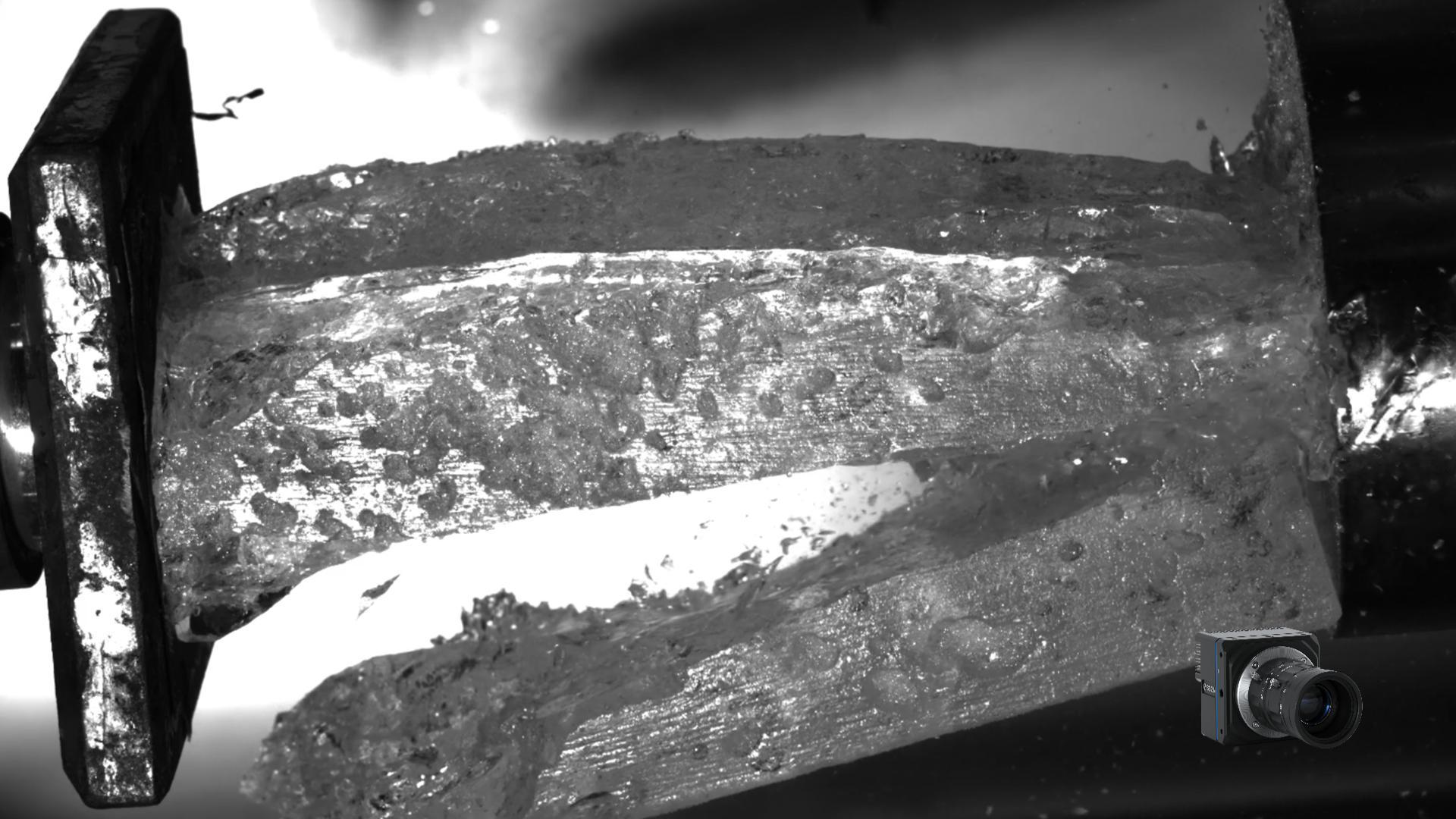The Hidden Costs of Unseen Ice Fractures
Unmonitored ice fractures in polar areas cost global shipping and offshore energy billions each year. Unpredictable fractures often cause hull damage, structural failures, and mission delays. Not seeing and analyzing these quick changes leads to missed chances for better designs, lower risks, and immediate responses.
In high-latitude areas, capturing the moment ice fails isn’t helpful, it’s crucial. Until recently, technical limitations made this virtually impossible.
Why Standard Cameras Fail in Sub-Zero Ice Fracture Analysis
Conventional imaging systems fall short under extreme conditions. Here are three common failure points:
Insufficient Frame Rate: Ice fractures in milliseconds. Most cameras can’t keep up, capturing only blurry or incomplete sequences.<500 FPS cameras miss 80% of crack propagation phases.
Buffer Lag and Data Loss: Fast events can fill up small onboard storage. This leads to frame drops and uneven timelines.
Temperature Sensitivity: Standard electronics and optics struggle below freezing. They can fail or create noise. Batteries freeze, lenses fog and sensors lag below -10°C.
This tech gap has forced researchers and engineers to rely on guesswork, simulations, or incomplete data—until now.
Case Study: -20°C Cold Start Ice Fracture Test
In an ultra-low-temperature lab, researchers started the SHS Series at -20°C. They made an ice fracture on purpose.
Setup:
Environment: -20°C
Resolution: 1920×1080
Frame Rate: 2250FPS
Results:
a. Zero frame loss during burst capture
b. Provided clean footage for crack length and direction analysis
c. Validates the excellent performance of SinceVision’s SHS Series high-speed camera. It highlights its strong environmental adaptability and operational stability.
Why Choose the SHS Series for Sea Ice Research?
In marine engineering, polar research, and related fields, the mechanical behavior and fracturing of sea ice are key topics. Sea ice’s brittleness and inhomogeneity make its fracture process fast and hard to predict—placing high demands on imaging equipment:
High frame rate: To capture rapidly changing events
Low-temperature stability: To operate reliably in harsh cold environments
Image continuity: To prevent loss of critical data
With its core capabilities like extreme temperature tolerance, full-resolution high frame rate output, and proprietary image acquisition software. The SHS Series achieves millisecond-level capture and accurate reproduction of sea ice fracture events, delivering strong technical support for scientific research projects.
Learn more on the SHS Series High-Speed Camera
Breakthrough Solution: SinceVision SHS Series for Ice Fracture Analysis
The SHS Series High-Speed Camera by SinceVision captures high-quality images in real-time, even in tough conditions. Developed with input from marine engineers and polar scientists, it solves the core challenges of high-speed data capture, signal integrity, and environmental resilience.
The SHS Series offers a full HD resolution of 1920×1080 at 2250FPS. It uses real-time CoaXPress 2.0 transmission. This ensures clear, continuous visual documentation of brittle fractures in arctic conditions.
Read the full spececifications sheet
Real-Time Transmission at 50 Gbit/s
Technical Specs:
Resolution: 1920×1080
Frame Rate: 2250FPS (Full Frame)
Interface: CoaXPress 2.0, 4 channels @ 12.5Gbps each
Why It Matters: Traditional systems keep data on-site. This causes slow processing and storage delays. The SHS Series transmits high-speed video in real-time to a connected terminal.
This architecture cuts out wait times. You can visualize things immediately, adjust controls as needed, and log data without manual input.
Real-World Impact: In sea-ice fracture testing, instant transmission cuts post-processing time. This sped up mechanical model validation.
Frame Integrity with Zero Loss
The SHS Series features a unique frame-protection algorithm. It offers nanosecond-level trigger synchronization and supports multiple devices. This technical foundation fills data gaps during fast recording. This is key for capturing irreversible ice fracture events. Why does this matter? Losing just one frame can ruin the fracture sequence. This makes careful analysis feel like guesswork. The SHS Series has a self-developed acquisition system. It stops frame loss during peak loads. This way, every microsecond of crack propagation is captured.
Designed for Extreme Temperatures
Engineered for polar brutality, the SHS Series operates down to -40°C with an IP64-rated enclosure and 70g shock resistance. These specs address two key problems in sub-zero research: component failure and environmental interference. Why does this matter? Standard electronics falter in freezing labs—lenses fog, batteries drain, and data distortion. The SHS operates flawlessly without condensation or performance drops, even when exposed to thermal shocks.
High-Definition Image Clarity
The SHS Series has a global shutter CMOS sensor, low-noise circuitry, and uncompressed 1080p output. It provides lab-quality imaging even in the field. This trio removes motion blur and boosts light sensitivity. This is key for analyzing tiny fractures. Why does this matter? Crack initiation happens on a tiny scale. Blurry or grainy images can misrepresent how fractures work. This makes models unreliable.
FAQs
What frame rate is needed to record ice fractures?
2250FPS or higher is recommended to capture brittle fracture transitions in milliseconds.
Can high-speed cameras work below freezing?
Yes, models like the SHS Series operate reliably down to -40 °C.
What is CoaXPress 2.0 used for?
It transmits uncompressed high-speed video in real time, ideal for precision imaging.
How do I prevent frame loss in high-speed footage?
Use cameras with built-in data protection and real-time streaming, like the SHS Series.
Why is global shutter important for ice fracture imaging?
It prevents motion distortion, ensuring an accurate analysis of rapid events.
Where can I find the specifications for the SHS Series?
Visit SinceVision's SHS product page.
-
Corporate News2024-10-17High-Speed Imaging for Hydrodynamics: A Closer Look
-
Corporate News2025-01-09The All-New SinceVision Smart Series High-Speed Camera: Precision, Innovation, and Ultra Performance
-
Corporate News2025-03-13Ultra High-Speed Series: The Highest Megapixel High-Speed Camera by SinceVision
-
Corporate News2024-12-20Observe Argon Arc Welding Pool Dynamics with SH6 High-Speed Camera at 10,000 fps
-
Corporate News2024-12-24Observing Bacterial Flagella Motion with MINI Series High-Speed Cameras
-
Corporate News2025-01-22The Ultimate Guide to Smart Series High-Speed Cameras for Industrial and Scientific Applications
-
Corporate News2025-03-12Unveiling the Secrets of Composite Materials' Strength with High-Speed Cameras and DIC Technology
-
Corporate News2025-06-05SinceVision Unveils SHS Series High-Speed Cameras: A Game-Changer for Real-Time Industrial Imaging









